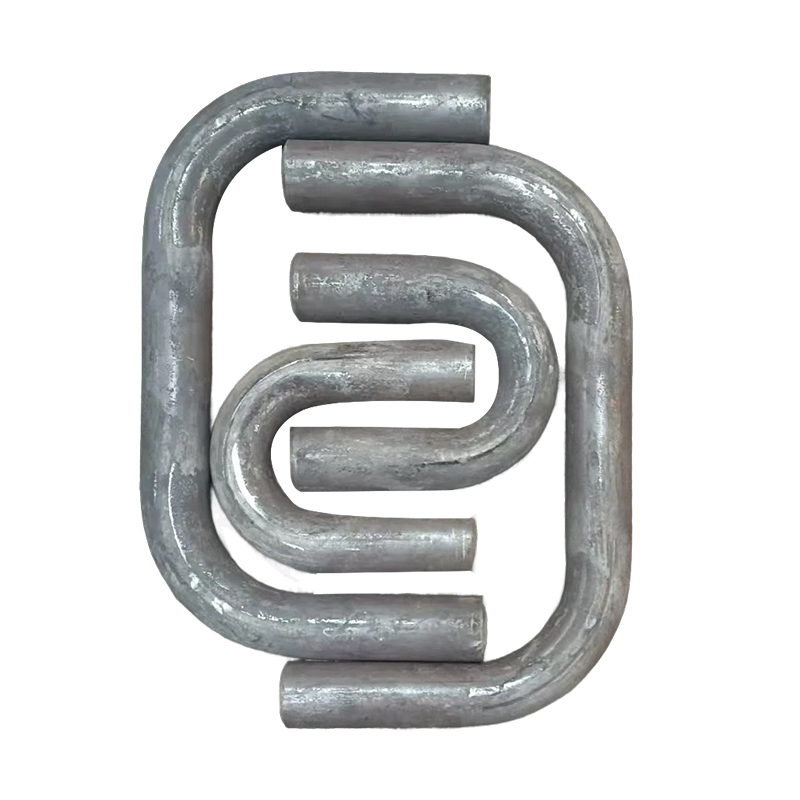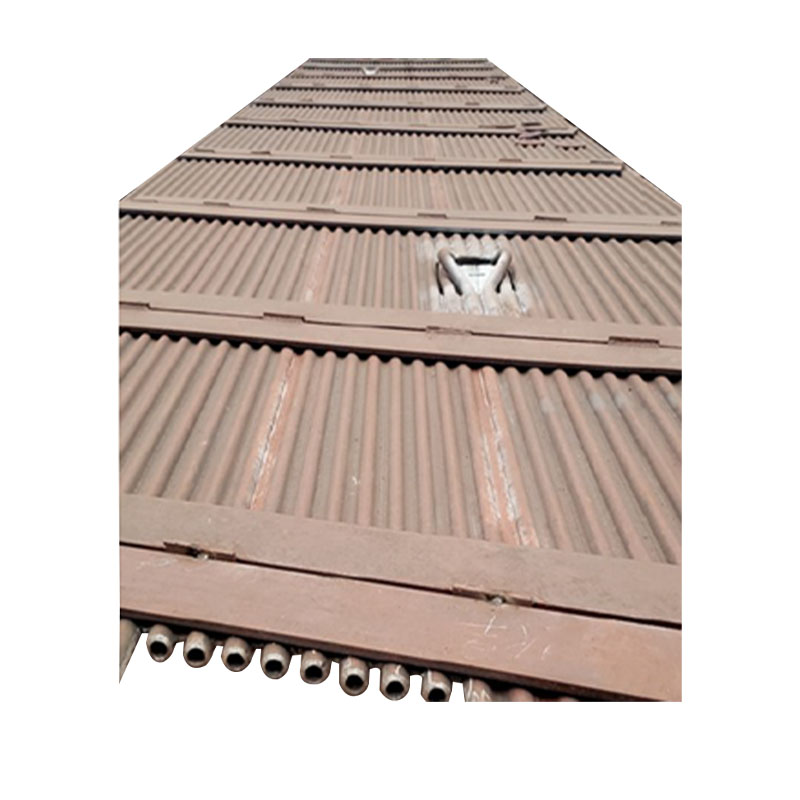How to precisely control the flow state in boiler evaporator module products to achieve optimal evaporation?
Release Time : 2025-11-06
As the core equipment for heat energy conversion, the performance of boiler evaporator module products directly determines the overall thermal efficiency, operational stability, and energy consumption level. During evaporation, water or working fluid transforms from a liquid to a vapor state, involving complex phase change heat transfer and two-phase flow behavior. Improper flow state control can easily lead to problems such as dry burning, deteriorated heat transfer, water hammer, or steam-water stratification, not only reducing efficiency but also potentially endangering equipment safety.
1. Optimize Piping Structure: Guiding Uniform Flow Distribution
Evaporators typically consist of multiple parallel heated tubes. Uneven inlet resistance or uneven heat load distribution in each tube can lead to "flow imbalance"—some tubes overheat and dry out, while others experience excessive flow. To solve this problem, modern boiler evaporator module products generally employ inlet orifice plates, distribution headers, or Venturi structures to force uniform flow of the working fluid entering each tube. Meanwhile, a well-designed pipe diameter, bend curvature, and layout can effectively suppress gravity-induced steam-water stratification, ensuring efficient heat transfer in the two-phase flow within the pipe, such as annular or mist-like flow, maximizing the utilization of the heat exchange area.
2. Intelligent Control System: Dynamically Matching Heat Load and Flow Rate
Precise control of the flow state relies on an advanced automatic adjustment system. By installing high-precision mass flow meters and pressure/temperature sensors at the evaporator inlet, combined with outlet steam dryness monitoring, the DCS or PLC system can calculate the current evaporation demand in real time and adjust the feedwater pump frequency, valve opening, or burner power accordingly. For example, during a sudden load increase, the system increases the feedwater flow rate in advance to prevent the pipe wall from overheating due to instantaneous water shortage; during low-load operation, the flow rate is reduced to prevent "flooding" or steam carryover. This feedforward-feedback composite control strategy ensures that the flow state always follows the optimal evaporation curve, achieving dynamic balance.
3. Enhanced Heat Transfer Surface: Improving the Stability of the Phase Change Process
The inner wall of the evaporator tubes often employs enhanced heat transfer structures such as internal threads, micro-ribs, or sintered porous coatings. These microstructures not only increase the heat transfer area but, more importantly, promote bubble nucleation and detachment, delaying film boiling and significantly improving the critical heat load. In high heat flux regions, stable nucleation boiling maintains a high heat transfer coefficient while preventing a sudden rise in metal wall temperature due to localized drying. Furthermore, some advanced modules incorporate nanofluidic working fluids or surface hydrophilic modification technologies to further optimize the vapor-liquid interface behavior and improve evaporation uniformity.
4. Water Chemistry and Water Quality Management: Ensuring the Purity of the Flow Medium
Even with a perfect flow design, impurities, dissolved oxygen, or hardness ions in the feedwater will precipitate and deposit on the pipe walls under high temperature and pressure, forming scale or corrosion products. This hinders heat transfer, alters local flow resistance, and induces flow deviation. Therefore, boiler systems must be equipped with comprehensive water treatment processes (such as softening, deoxygenation, and chemical dosing) and online water quality monitoring. High-purity feedwater not only extends equipment life but also ensures that the flow state is not affected by fouling, maintaining optimal evaporation performance under design conditions.
5. Simulation and Digital Twins: Predicting and Optimizing Flow Behavior
During the design phase, engineers widely employ CFD simulation to create 3D models of the two-phase flow field inside the evaporator, predicting velocity distribution, vapor holdup, and pressure drop characteristics under different operating conditions, thereby optimizing structural parameters. During operation, some high-end boilers have deployed digital twin systems to compare real-time operating data with the virtual model, providing early warnings of flow anomalies and guiding maintenance personnel to proactively intervene.
The efficient operation of boiler evaporator module products is essentially a precise control of complex two-phase flows. Through multi-dimensional collaboration of structural optimization, intelligent control, surface strengthening, water quality assurance, and digital technology, modern boilers can maintain a stable, uniform, and efficient evaporation state across a wide load range. This not only significantly improves energy utilization efficiency and reduces carbon emissions but also provides solid support for the continuity and safety of industrial production. Precise flow control is about mastering the lifeline of heat energy conversion—every moment of water vaporization embodies engineering wisdom's profound understanding and ingenious application of natural laws.
1. Optimize Piping Structure: Guiding Uniform Flow Distribution
Evaporators typically consist of multiple parallel heated tubes. Uneven inlet resistance or uneven heat load distribution in each tube can lead to "flow imbalance"—some tubes overheat and dry out, while others experience excessive flow. To solve this problem, modern boiler evaporator module products generally employ inlet orifice plates, distribution headers, or Venturi structures to force uniform flow of the working fluid entering each tube. Meanwhile, a well-designed pipe diameter, bend curvature, and layout can effectively suppress gravity-induced steam-water stratification, ensuring efficient heat transfer in the two-phase flow within the pipe, such as annular or mist-like flow, maximizing the utilization of the heat exchange area.
2. Intelligent Control System: Dynamically Matching Heat Load and Flow Rate
Precise control of the flow state relies on an advanced automatic adjustment system. By installing high-precision mass flow meters and pressure/temperature sensors at the evaporator inlet, combined with outlet steam dryness monitoring, the DCS or PLC system can calculate the current evaporation demand in real time and adjust the feedwater pump frequency, valve opening, or burner power accordingly. For example, during a sudden load increase, the system increases the feedwater flow rate in advance to prevent the pipe wall from overheating due to instantaneous water shortage; during low-load operation, the flow rate is reduced to prevent "flooding" or steam carryover. This feedforward-feedback composite control strategy ensures that the flow state always follows the optimal evaporation curve, achieving dynamic balance.
3. Enhanced Heat Transfer Surface: Improving the Stability of the Phase Change Process
The inner wall of the evaporator tubes often employs enhanced heat transfer structures such as internal threads, micro-ribs, or sintered porous coatings. These microstructures not only increase the heat transfer area but, more importantly, promote bubble nucleation and detachment, delaying film boiling and significantly improving the critical heat load. In high heat flux regions, stable nucleation boiling maintains a high heat transfer coefficient while preventing a sudden rise in metal wall temperature due to localized drying. Furthermore, some advanced modules incorporate nanofluidic working fluids or surface hydrophilic modification technologies to further optimize the vapor-liquid interface behavior and improve evaporation uniformity.
4. Water Chemistry and Water Quality Management: Ensuring the Purity of the Flow Medium
Even with a perfect flow design, impurities, dissolved oxygen, or hardness ions in the feedwater will precipitate and deposit on the pipe walls under high temperature and pressure, forming scale or corrosion products. This hinders heat transfer, alters local flow resistance, and induces flow deviation. Therefore, boiler systems must be equipped with comprehensive water treatment processes (such as softening, deoxygenation, and chemical dosing) and online water quality monitoring. High-purity feedwater not only extends equipment life but also ensures that the flow state is not affected by fouling, maintaining optimal evaporation performance under design conditions.
5. Simulation and Digital Twins: Predicting and Optimizing Flow Behavior
During the design phase, engineers widely employ CFD simulation to create 3D models of the two-phase flow field inside the evaporator, predicting velocity distribution, vapor holdup, and pressure drop characteristics under different operating conditions, thereby optimizing structural parameters. During operation, some high-end boilers have deployed digital twin systems to compare real-time operating data with the virtual model, providing early warnings of flow anomalies and guiding maintenance personnel to proactively intervene.
The efficient operation of boiler evaporator module products is essentially a precise control of complex two-phase flows. Through multi-dimensional collaboration of structural optimization, intelligent control, surface strengthening, water quality assurance, and digital technology, modern boilers can maintain a stable, uniform, and efficient evaporation state across a wide load range. This not only significantly improves energy utilization efficiency and reduces carbon emissions but also provides solid support for the continuity and safety of industrial production. Precise flow control is about mastering the lifeline of heat energy conversion—every moment of water vaporization embodies engineering wisdom's profound understanding and ingenious application of natural laws.







